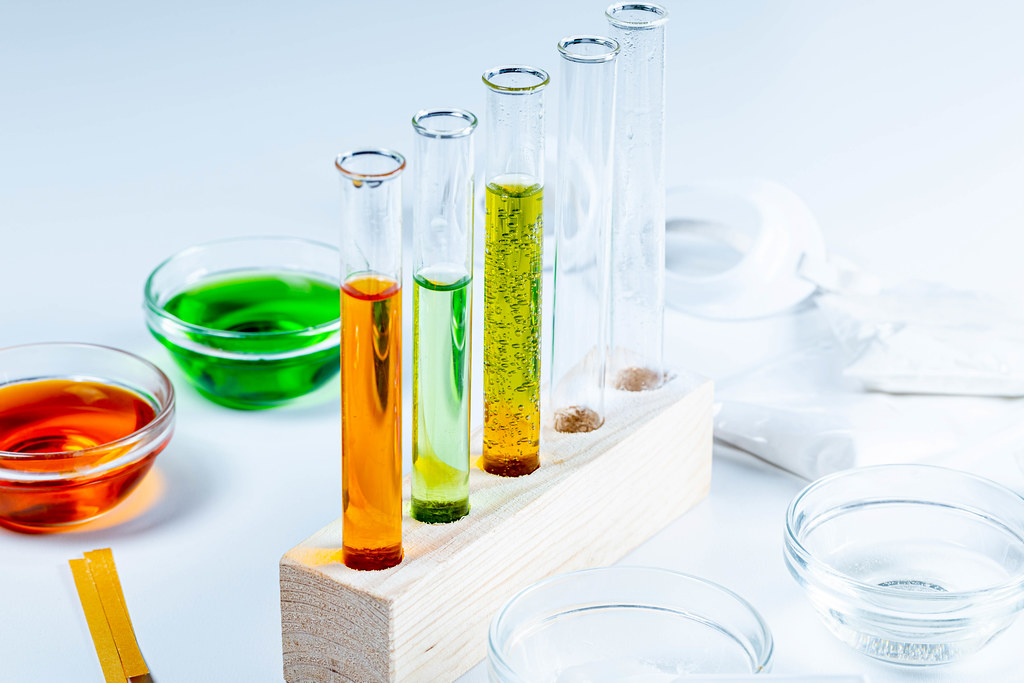In the grand cosmic ballet, everything from a mere speck of stardust to the titanic sun itself is wired together in an intricate interplay of elements and reactions. This invisible choreography governing life, the Universe, and everything in between, is orchestrated by the science of chemistry. Brewing within the belly of every star, whispering within each strand of DNA, and echoing in the daily brew of your morning coffee, chemistry is the clandestine framework that truly runs the world. Do you recall how Alice once tumbled down the rabbit hole into Wonderland? Prepare yourself for a similar journey as we delve into the mesmerizing world of Chemistry, unraveling its core concepts and basic principles in an easy-to-understand manner. “Basic Concepts in Chemistry: A Primer” is your ticket to embarking on an adventure that will open your eyes to the spectacular dance of atoms and molecules, revealing the coherence hiding in the seemingly chaotic Universe. So let’s roll up our sleeves, put on our lab coats, and prepare to marvel at the magic that is basic chemistry. Welcome to the colorful and captivating landscape of chemistry where elements and compounds reign supreme. Chemical elements are the simplest forms of matter and cannot be broken down further in a chemical reaction. Compounds, on the other hand, are the offspring of two or more different parent elements that come together in definite proportions. Think of carbon dioxide – a result of the union of carbon and oxygen. In chemistry, such marriages are common but the breakups can be quite volatile!
Chemical reactions symbolize this tumultuous journey of the elements – a series of breakups and hookups – where atoms disconnect from their parent compounds, only to rejoin others. And all along, this dynamic dance of reactions, there are countless stories of betrayal, romance, defeat, and victory being played out at an atomic level!
Next, we step into a territory that’s a little acidic and, at times, basic. Thus unfolds the saga of acids and bases, protagonists in the drama played out in chemical labs and everyday life alike. The pH scale then, is like an end-of-the-day news update, informing us about the balance of power. Higher up on the scale, bases rule, while lower down, acids hold sway. But don’t let their power struggles fool you; these substances are integral to life itself - biologically, industrially, and environmentally.
The game of chemistry can get a bit complicated with those mind-boggling equations. Learning to balance chemical equations is like mastering a piece of art. It’s all about ensuring that what you start with, you end with – in this case, the same number of atoms of each kind, both on the reactant side and the product side.
Chemistry is not just a confined school subject, it can be found everywhere: in the food we eat, the air we breathe, the medicines we take, or even the fuel that powers our vehicles. It’s all around us, shaping our world in ways we scarcely realize. This incredible science is constantly in action, maintaining the balance of life and driving the wheels of progress.
Now, who doesn’t enjoy a good puzzle? But the periodic table is more than that. It’s a listing of elements in order of their atomic number, neatly arranged based on shared characteristics. It’s a story of how the elements interact with each other, the tales of their past, and hints about their future.
Safety is paramount, especially when you are dealing with substances that can cause harm. Lab safety rules in chemistry stress upon protecting yourself and others, avoiding accidents, and maintaining a sanitized workspace. It’s important to respect these compounds – they can be powerful allies but also formidable enemies if mishandled.
Speaking of concentration, understanding molarity, molality, and normality helps us measure the concentration of solutions. It’s like knowing the strength of your morning coffee or medicinal syrup – too weak, and it might not do the job, too strong, and it might be harmful.
The world of organic chemistry is a kaleidoscope of carbon-based compounds. From DNA to plastics, and photosynthesis to pharmaceuticals, carbon’s ability to form a variety of bonds with other elements makes it the central character in this field.
Finally, we have analytical chemistry, the detective of the chemistry world. It’s about finding the ‘what’ and ‘how much’ of substances in a sample, and can involve various techniques each suitable for the task. It helps identify pollutants in air and water, screen for diseases, and even track illicit substances. In effect, it is the magnifying glass shedding light on the invisible. With atoms as our alphabets, we’ve woven a myriad of tales in the realm of Chemistry. Like a restless sea of endless possibilities, chemical concepts continue to dazzle, confound, and inspire. We charted the course of matter, delved into the art of bonding and isolation, split light into spectral rainbows, and even turned on heat to yank atoms in a frenzied dance. As we close the chapter on this primer guide, it’s not really an ending. Think of it more as a springboard into this wondrous universe of Chemistry, a storybook written with cascades of atoms and molecules. The magic trick of Chemistry is not in its complexity, but more in the basic principles that underpin it. After all, isn’t the grandeur of the cosmos also concealed in the humble atom? With a palette of elements in hand and a spectrum of reactions to explore, you’re ready to paint your own chemical masterpiece. Keep the flame of curiosity burning, for in its light, more of Chemistry’s secrets will certainly unfurl. Until then… Stay curious, stay exploring, and remember – the periodic table is just the beginning. So long, fellow architects of matter!






